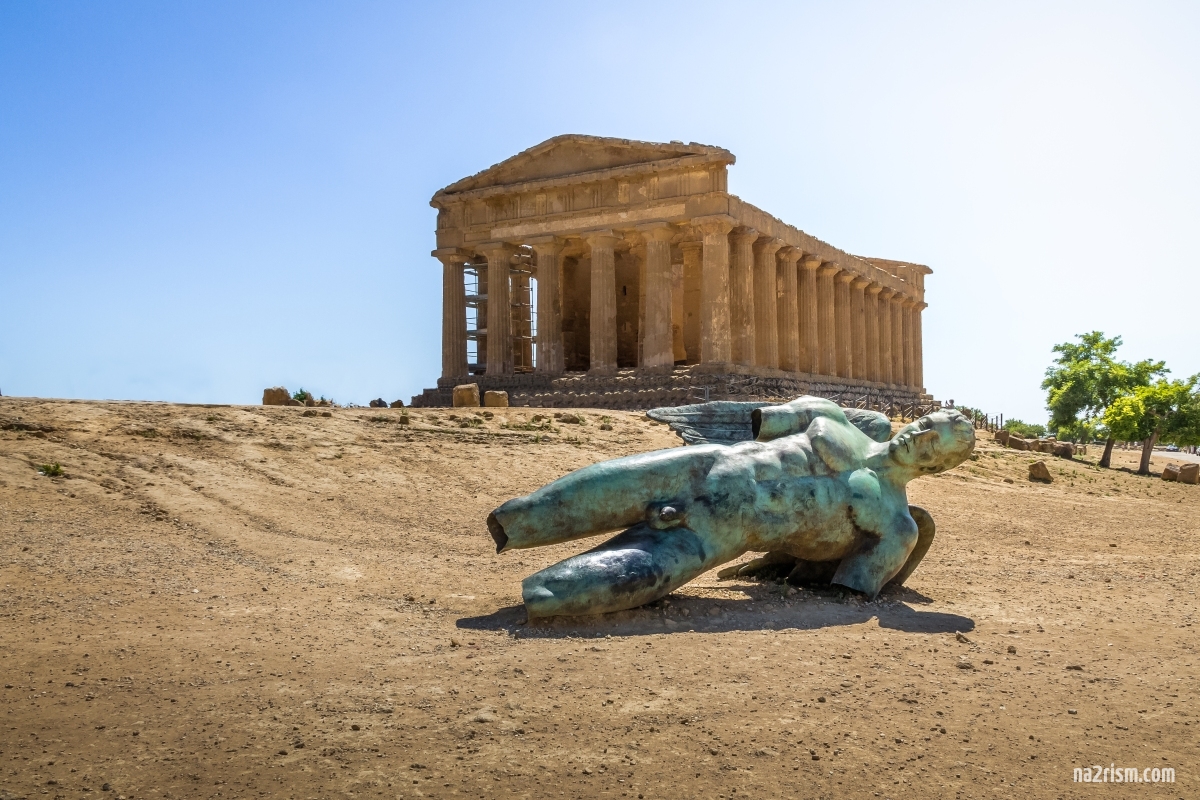Throughout human history, attitudes toward nudity have varied greatly across different societies and cultures. Some have embraced the human body in its natural form, while others have developed social norms that restrict public exposure. The historical openness to nudity reflects more than just societal customs; it ties deeply into philosophies of life, religion, politics, and social order. From ancient civilizations to modern-day movements, several societies have stood out for their unique perspectives on nudity. This article will explore the societies that have been the most open about nudity through history, examining the reasons behind their practices and the cultural impact they have had.
The Ancient Greeks: Celebrating the Ideal Body
One of the most well-known societies with a positive view of nudity is ancient Greece. The Greeks, particularly during the classical period, are often regarded as pioneers of body positivity in Western culture. For them, nudity was not just acceptable in certain contexts; it was celebrated, particularly in relation to athletic and artistic expression.
In athletic competitions such as the Olympic Games, athletes participated completely nude, embodying the Greek ideal of physical excellence. This nudity was not viewed as something shameful but rather as a celebration of human perfection and strength. The naked body symbolized purity, divine beauty, and strength, aligning with the Greek belief in the harmony between body and soul. Public baths were another domain where nudity was common and accepted. These spaces were not just places for cleansing but also for socializing and exercising, further reinforcing the positive associations with the unclothed human form.
Greek art also reflects this reverence for the body. Sculptors aimed to capture the human form in its most idealized state, and many of the most famous works from ancient Greece depict figures entirely nude. These statues, often of gods, heroes, and athletes, continue to inspire admiration today for their beauty and craftsmanship.
However, it’s essential to note that this cultural openness was primarily restricted to men. Female nudity was far less common in public life and art, although there were exceptions in religious rituals and private settings.
Ancient Rome: Functional Nudity in a Pragmatic Society
The Romans, while greatly influenced by Greek culture, had a more utilitarian approach to nudity. Unlike the Greeks, they were less inclined to romanticize the naked body, yet they still practiced nudity in several contexts, particularly in public baths and certain sports. Roman baths, similar to those in Greece, were places where citizens would strip down to relax, socialize, and maintain hygiene. These communal baths were integral to daily life, cutting across social classes and fostering a sense of equality among participants.
While Roman society did not elevate the naked body to the same idealized level as the Greeks, nudity was still seen as functional rather than immoral. Public baths were open to men and women, although they often had separate facilities or times of entry. In Roman art and sculpture, nudity was often reserved for depictions of gods or mythological figures, symbolizing power and divinity.
Roman attitudes toward nudity were, however, influenced by the rise of Christianity, which brought with it a more conservative approach to the body and modesty. As Christian values became more prominent in the Roman Empire, attitudes toward public nudity shifted, leading to a decline in its acceptability by the time of the empire’s collapse.
Indigenous Peoples of Africa: The Naked Body as a Norm
Moving beyond the ancient Mediterranean world, many indigenous peoples of Africa have historically maintained open attitudes toward nudity, often dictated by climate, practical needs, and cultural traditions. For various African tribes, nudity or minimal clothing was the norm, with the body viewed simply as a natural part of existence.
In these societies, nudity was often not associated with sexuality or shame but rather seen as a practical response to the environment. For instance, in warm regions, there was little need for extensive clothing, and people would go about their daily lives with minimal covering. Some tribes in Africa, such as the Himba people of Namibia, continue to wear very little clothing in their traditional way of life.
The naked body in these societies was also deeply connected to spiritual beliefs and rites of passage. Nudity was often part of rituals, ceremonies, and dances, symbolizing purity, transformation, and connection to the earth. Body adornments such as paint, jewelry, and scarification held more importance than clothing, as they were seen as expressions of identity and cultural heritage.
The arrival of European colonizers, missionaries, and the spread of Western religious values brought significant pressure on these societies to adopt more conservative clothing practices. However, many indigenous groups have continued to resist these pressures, maintaining their traditions and practices to this day.
The Indian Subcontinent: Nudity in Spiritual Asceticism
In ancient India, nudity was often associated with spiritual asceticism and the renunciation of material possessions. For certain sects of Hinduism, Jainism, and Buddhism, the practice of going naked, or “digambara”, symbolized a rejection of worldly attachments and a commitment to spiritual purity.
Jainism, in particular, is known for its sect of Digambara monks who practice complete nudity. The Digambaras believe that clothing represents an attachment to material possessions and that by abandoning clothes, they can move closer to achieving liberation or moksha. These monks live highly ascetic lives, renouncing not only clothing but also many other material comforts, focusing instead on meditation and the path to spiritual enlightenment.
In ancient Hinduism, nudity also had a place in certain rituals and practices, particularly those associated with the worship of fertility gods and goddesses. Nudity in these contexts was not seen as shameful but as an expression of divine energy and creativity.
Although contemporary Indian society is generally more conservative regarding nudity, particularly in public spaces, these historical practices demonstrate a long-standing tradition of using the naked body as a symbol of spiritual liberation and divine connection.
The Naturist Movement: A Modern Revival of Body Positivity
Fast forward to the 19th and 20th centuries, the Naturist movement emerged as a modern revival of societies’ open attitudes toward nudity. Originating in Europe, particularly in Germany and France, the movement promoted the idea that nudity could foster a more positive relationship with the body, nature, and other people. Naturists advocated for clothing-optional lifestyles in designated spaces such as beaches, camps, and clubs, arguing that it promoted physical and mental health, freedom from social constraints, and a return to a more natural way of life.
Germany played a key role in the early development of naturism, with the first naturist organizations and camps appearing there in the early 20th century. This movement was rooted in a broader back-to-nature philosophy, which emphasized the benefits of fresh air, exercise, and natural living. In France, naturism gained popularity in the post-World War II era, leading to the establishment of several well-known naturist resorts, such as Cap d’Agde, which became a mecca for nudists worldwide.
Naturism quickly spread across Europe and eventually to other parts of the world, including North America and Australia. The movement faced opposition, particularly from religious and conservative groups, but it also found a growing base of supporters who believed in the movement’s ideals of body acceptance, equality, and freedom.
Indigenous Peoples of the Pacific: Nudity in Harmony with Nature
The indigenous peoples of the Pacific Islands also have a long history of openness toward nudity, shaped by their intimate relationship with nature and the environment. In many island cultures, such as those in Polynesia, clothing was minimal or entirely absent, particularly before the arrival of European explorers and missionaries in the 18th and 19th centuries.
For these societies, nudity was a practical response to the warm, tropical climate and was also deeply intertwined with cultural traditions, ceremonies, and social life. Like many African tribes, the Polynesians and other Pacific Islanders did not associate nudity with sexual impropriety. Instead, the naked body was seen as a natural part of life and was often adorned with tattoos, body paint, and other decorations that held cultural and spiritual significance.
However, the influence of European colonizers and missionaries brought about significant changes in these societies. Western ideals of modesty and morality were imposed, and traditional clothing practices were altered to conform to these new standards. Despite this, some island communities continue to embrace their traditional practices, particularly in more remote areas.
The Scandinavian Sauna Culture: Nudity and Social Bonds
In Northern Europe, particularly in Finland, Sweden, and other Scandinavian countries, the sauna has long been a central part of daily life, and nudity in the sauna is considered entirely natural and normal. For centuries, saunas have been places not just for bathing but for relaxation, socialization, and even conducting business. In these cultures, sauna nudity transcends social class and gender boundaries, with people often enjoying the sauna together in mixed-gender groups.
The Finnish sauna culture, in particular, stands out for its casual attitude toward nudity. Saunas are seen as sacred spaces where the focus is on health, well-being, and community bonding. Nudity in the sauna is not sexualized but is instead a reflection of the importance placed on cleanliness, physical health, and the connection to nature.
This openness to nudity in the sauna extends to various contexts, including public saunas in cities, lakeside cottages, and even in government buildings. The sauna tradition has been passed down through generations, and it continues to be a significant part of Scandinavian life, uniting people in a shared, nonjudgmental space where the naked body is celebrated in its most natural form.
Reflections on the Unclothed Human Journey
Throughout history, numerous societies have embraced nudity in various ways, whether for practical reasons, spiritual beliefs, or as a symbol of physical excellence. From the ancient Greeks’ celebration of the ideal human form to the indigenous peoples of Africa and the Pacific who viewed the naked body as a natural part of life, nudity has often been intertwined with cultural and societal values.
In modern times, the Naturist movement has brought a renewed appreciation for body positivity and freedom, while cultures like the Scandinavian sauna tradition continue to normalize nudity as part of everyday life. As societies evolve, so too do their attitudes toward the human body, but history shows us that nudity, in many contexts, has been embraced not as something to be hidden but as a reflection of humanity’s connection to nature, spirituality, and each other.

